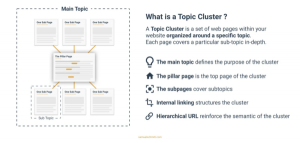Over the past week or so, I’ve been on a bit of a rampage on sales and marketing automation tools. Some of my friends in those companies might be thinking, “What’s gotten into you Dave? Why are you turning your back on us?” Others of you may think I’m from the stone ages, and should just crawl back into some cave and be quiet.
In reality, I’m really a strong enthusiast and advocate for leveraging automation tools as much as possible. In the hands of great sales people, they have the potential of amplifying capabilities tremendously. We’ve seen sales teams leveraging tools with great impact and amazing results. All of the vendors can provide case studies reinforcing this.
Unfortunately, the reality in the majority of cases I see is far from that. Too many of the tools provide marginal or no performance improvement. Rather than building the capabilities of sales people helping them become better, they become crutches. Sales people and managers come to rely on the tools as a surrogate for developing strong sales capability.
Why improve your ability to capture the customer’s imagination by planning a high impact sales call, when your tools just start dialing, connecting, and all the sales person has to do is read a script? Why research, target, and understand a prospect, when the tools do that for you, and all you have to do is blindly call a customer saying, “I have a cool product?”
Perhaps, not by design, but in implementation, these tools and new sales enablement capabilities have the effect of “dumbing down the sales person.”
As a bit of an idealist, I tend to think this is wrong. We need to leverage these tools to help make us better, not become crutches to mask our deficiencies, laziness, or sloppiness.
We need to leverage these tools to help us win more, at higher margins, faster. By themselves the tools don’t do this—otherwise we’d completely eliminate sales people. But in the hands of high performers, they amplify their capabilities, enabling them to create greater value and differentiation; freeing them up to focus on the things the tools can’t do–but are the ultimate differentiators in helping the customer buy.
There are some scenarios, however, that present some interesting alternatives to executive management.
Traditionally, we’ve thought of these tools as improving sales capability, implicitly aligning that with sales performance–the better the sales capability, the better the performance. We’re trying to make our current organization better (but as I’ve discussed, too often it doesn’t).
But what if I’m OK with today’s performance? What if I don’t need to increase sales capability, but I can leverage these tools to deliver a certain level of performance at a far reduced cost?
I can leverage a cheaper sales person, significantly reducing the cost of selling. I can even drive a great growth strategy with this, recruiting far more lower cost sales people for the same cost as a smaller high cost sales organization.
Many leading organizations are already doing this, though it’s seldom positioned as an overt strategy in deskilling the sales organization. It’s management’s responsibility to get the right level of sales performance at the lowest possible cost of selling. If they can do this by leveraging tools, adequately used by a far less expensive sales organization, then it’s a brilliant strategy.
It’s not the way vendors sell these tools—perhaps they should.
It’s not the intent many managers look at leveraging these tools—perhaps they should.
The emerging sales and marketing automation capabilities are very powerful. Managers need to be very clear and purposeful in their implementation of these tools.
If the objective is to improve the capabilities of the current sales organization, then they have make sure the tools are making people better–not giving them crutches to mask deficiencies, laziness, or sloppiness. Bluntly, if you aren’t raising the quota expectations when you implement these tools, then what are you paying for?
If the objective is to decrease the cost of selling in the implementation of the tools, then management needs to have a strategy for changing the sales organization–either reducing the number of sales people (increasing their quotas), or by migrating aggressively to a far lower cost sales organization. If you aren’t doing this, what are you paying for?
Vendors have a responsibility and a high sense of urgency in providing leadership and support to sales and marketing executives as they think about and implement these strategies. Since many of these tools are SaaS based, maximizing customer retention is critical to growth (even survival). If your customers aren’t achieving the results they expect, then it’s incumbent on them to stop using the tools.
Managers and leaders, be very clear what you are trying to achieve with these tools, make sure you are achieving these goals.
Vendors, be very clear what your customers are trying to achieve, make sure you are helping them achieve it.
Anything else is a waste of resource, time, money.
Business & Finance Articles on Business 2 Community(19)




